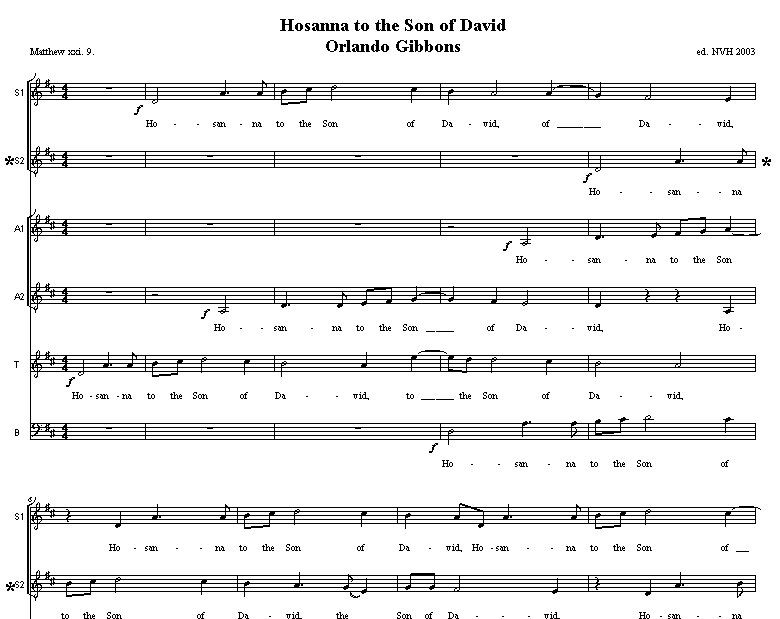- One of the first problems people have with sight-singing is following the music:
- First you have to find where your part starts;
- Then at the end of each line, you have to find where it goes next;
- If you don't do this quickly, you get behind, and then it is difficult to catch up
- So you need to understand the layout of multi-stave music, and how to find your next line quickly.
- Quite often, each different part has its own stave:
- The staves are written one below the other, but are always joined with a bracket on the left-hand end;
- One line of music, consisting of multiple staves that are bracketed together, is usually referred to as a "system";
- So when you get to the end of a line, you need to jump to the equivalent stave on the next system.
- Here is a complicated example. Imagine you are singing "Second Soprano", that is, the lower of two Soprano parts. This is the line marked *.
- So when you get to the end of the first line (the next *), you must jump to the second line of the next system, right at the bottom, also marked with a *.

- Things can get more complicated if the number of staves in a system changes during a piece:
- This is only done when two parts sing the same thing for a period of time, and to save space.


